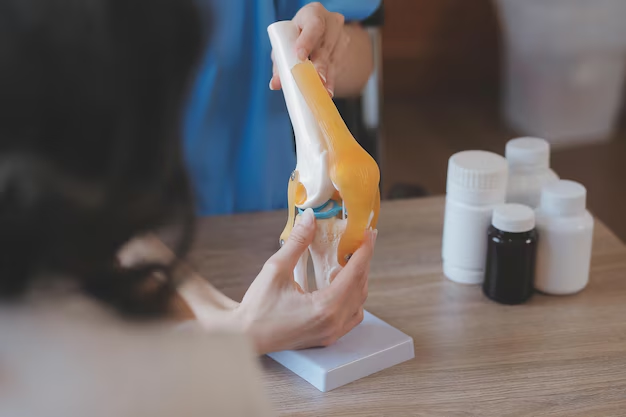Understanding Osteoporosis: What You Need to Know
Osteoporosis is often dubbed the "silent disease" because it develops without showing any symptoms until a fracture occurs. For millions worldwide, understanding this condition is essential not only to comprehend personal health risks but also to engage with effective prevention strategies. This article will delve into the facets of osteoporosis, shedding light on its causes, risk factors, and preventive measures to help you make informed health decisions.
What Is Osteoporosis?
Osteoporosis, derived from Greek meaning "porous bones," is a condition characterized by weakened bones that are prone to fractures. This weakening results from a reduction in bone mass and deterioration of bone tissue. It is a pervasive condition, particularly affecting older adults, but understanding it can help in preventing its onset.
The Importance of Bone Density
Bone density is a measure of mineral content in your bones. It is essential for maintaining their strength and rigidity. High bone density equates to strong bones, while low bone density indicates weakness, increasing vulnerability to fractures.
Key Point: Maintaining optimal bone density is crucial for bone strength and preventing osteoporosis.
Risk Factors of Osteoporosis
Age and Gender
Age is a major factor in developing osteoporosis. As people age, bone density decreases naturally. Women are particularly susceptible post-menopause due to a decrease in estrogen levels, which are vital for bone health.
Important Note: Women over the age of 50 and men over the age of 70 are at a higher risk.
Genetics
Genetic predisposition plays a significant role. If you have a family history of osteoporosis, the risk increases significantly.
Tip: Knowing your family medical history can help assess your risk early on.
Lifestyle Choices
Certain lifestyle factors can contribute to the development of osteoporosis, including:
- Diet: A lack of calcium and vitamin D can accelerate bone loss.
- Exercise: Sedentary lifestyles weaken bones over time.
- Smoking and Alcohol Consumption: These habits can negatively impact bone density.
Health Conditions and Medication
Chronic health conditions, such as rheumatoid arthritis, can increase the risk of osteoporosis. Additionally, certain medications like glucocorticoids used for inflammation may also lower bone density if used long-term.
Preventive Measures for Osteoporosis
Understanding osteoporosis allows for effective implementation of preventive measures!
Diet and Nutrition
Calcium and Vitamin D are critical nutrients for bone health.
- Calcium-Rich Foods: Milk, cheese, yogurt, leafy green vegetables
- Vitamin D Sources: Sun exposure, fish oils, fortified foods
Pro Tip: Incorporate a balanced diet that includes these nutrients for optimal bone health.
Physical Activity
Engaging in weight-bearing exercises like walking, dancing, or lifting weights can enhance bone strength.
- Regularity is key: Aim for 30 minutes most days.
- Variety helps: Incorporate both strength training and flexibility exercises.
Lifestyle Adjustments
- Quit Smoking: Smoking cessation can benefit bone health greatly.
- Moderate Alcohol Consumption: Keep alcohol intake low to reduce risk factors.
Bone Density Tests
Getting regular bone density tests can help in early detection and management of osteoporosis. Discuss with healthcare providers to know when these tests might be appropriate for you, especially if you are at higher risk.
Understanding Osteoporosis-Related Fractures
Fractures due to osteoporosis are common and can have serious consequences, including loss of independence in older adults. The most common fracture sites are the hip, spine, and wrist.
Preventing Falls
To prevent fractures, especially in seniors, it’s vital to minimize fall risks. This includes ensuring homes are safe with adequate lighting and slip-free floors, and using assistive devices if needed.
Emotional and Psychological Impacts
Living with or understanding one's risk of osteoporosis can be emotionally taxing. It is essential to approach this with a balanced mindset and seek support if needed.
Coping Strategies
- Stay Informed: Understanding the condition reduces anxiety and helps in management.
- Support Networks: Engage with support groups or counseling for emotional backing.
Innovations in Osteoporosis Research
Science continually evolves, providing hope for more effective treatments and preventive measures against osteoporosis. Current research focuses on understanding the genetic basis and developing new medications that can slow or reverse bone loss.
Emerging Treatments
- Biologics: These medications target pathways involved in bone remodeling.
- Gene Therapy: Experimental approaches aim to correct genetic predispositions.
Key Takeaways
- Awareness is Crucial: Understand the risk factors and assess personal risk.
- Maintain Bone Health: Prioritize a diet rich in calcium and vitamin D.
- Stay Active: Regular physical activity is critical.
- Lifestyle Matters: Avoid smoking and excessive alcohol consumption.
- Be Proactive: Regular bone density tests and medical consultations are essential.
🌟 Summary: Osteoporosis Insights
- 🦴 What: Osteoporosis weakens bones, increasing fracture risks.
- 📋 Risk Factors: Age, gender, genetics, lifestyle, and health conditions.
- 🍏 Prevention: Calcium & vitamin D-rich diet, exercise, and lifestyle changes.
- 🔍 Detection: Regular bone density tests for early detection.
- 🤝 Support: Leverage support networks for emotional well-being.
- 🔬 Research: Stay informed about emerging treatments and innovations.
Understanding osteoporosis is a crucial step in preventing it and maintaining a high quality of life. By recognizing risk factors and adopting a proactive approach, you can effectively manage bone health and embrace an active, fulfilling life.

Related Articles
- a Nurse Is Caring For a Client Who Has Osteoporosis.
- a Percutaneous Is Performed To Treat Osteoporosis Related Compression Fractures
- Can Alcohol Cause Osteoporosis
- Can I Do Pilates If I Have Osteoporosis
- Can I Reverse Osteoporosis
- Can Men Get Osteoporosis
- Can Osteoporosis Affect Teeth
- Can Osteoporosis Be Cured
- Can Osteoporosis Be Painful
- Can Osteoporosis Be Reversed